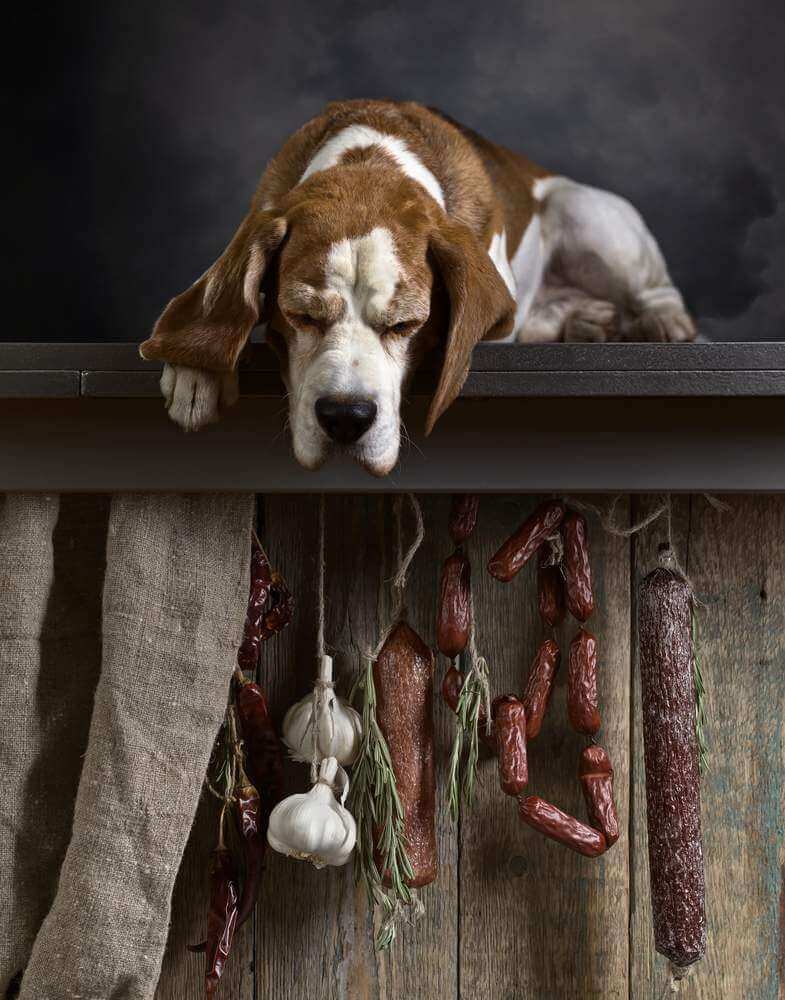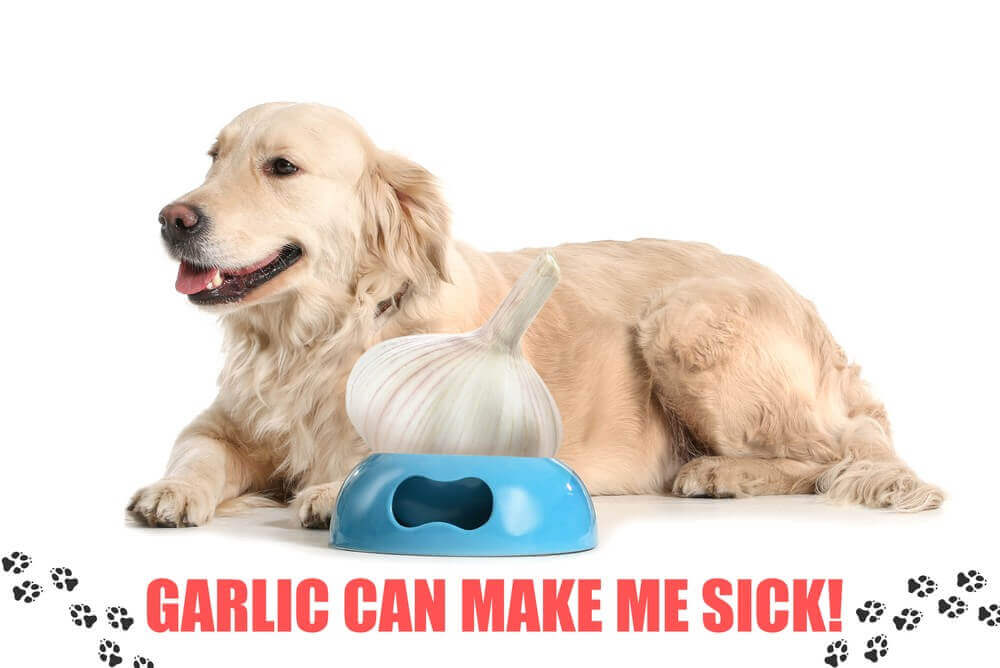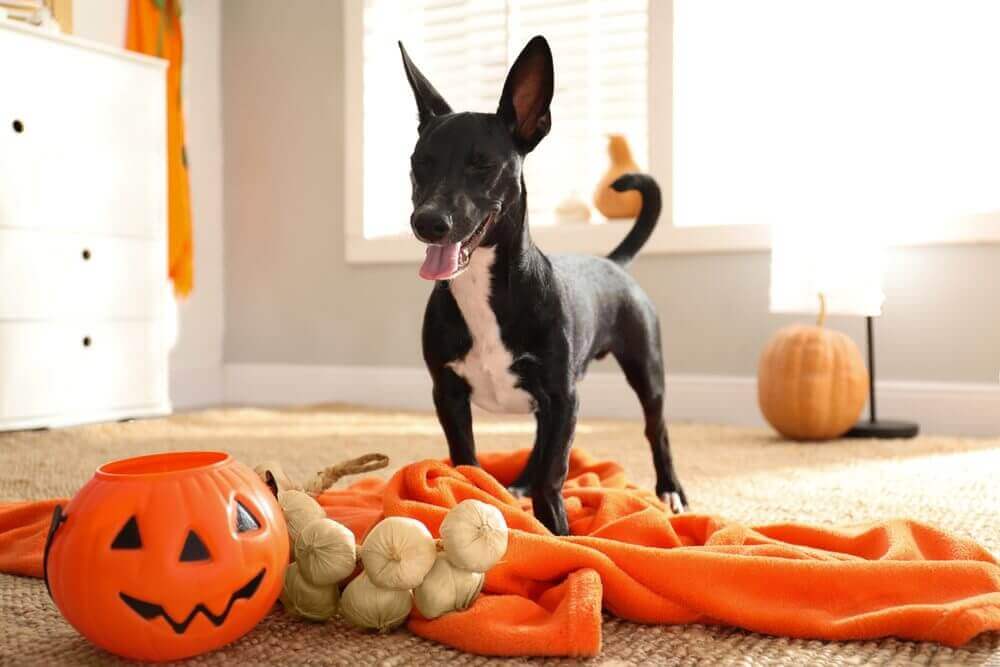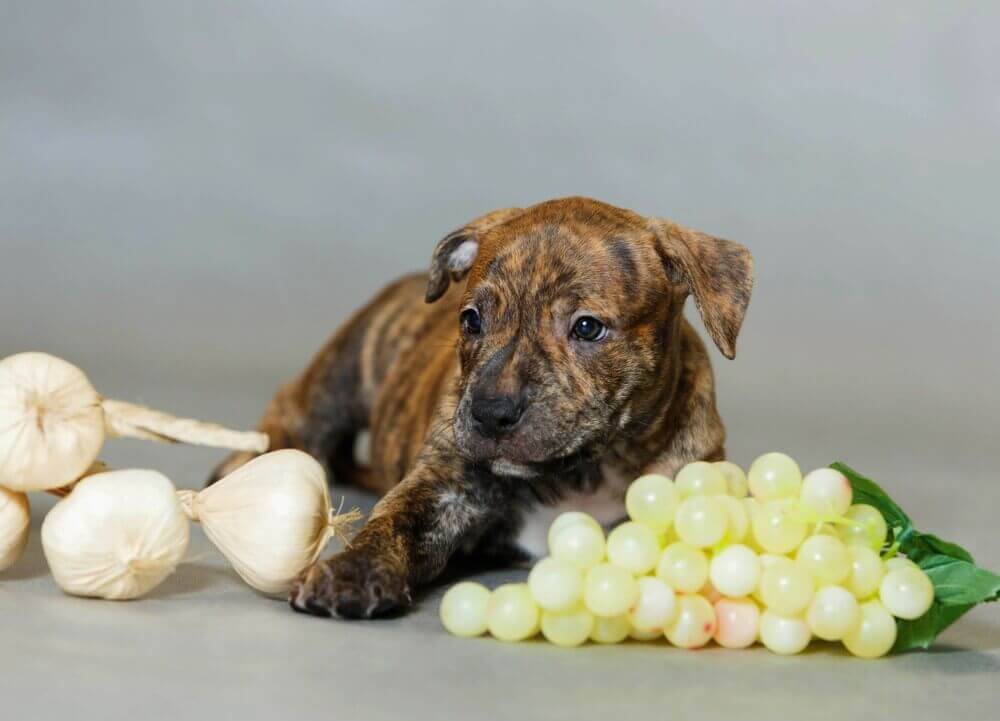Last updated: July 19, 2022
Garlic seems like a dream plant with its human immune-system-boosting abilities and, of course, its fragrant smell and delicious taste.
Obviously, you want to share all of that with your dog! And then, you’ll probably ask yourself the question “is garlic bad for dogs?”. If you’re tempted to share a scoop of garlic pasta and sauce with your dog, but you’re worried about all the “don’t feed your dog garlic” warnings out there, read on.
While garlic can be damaging to your dog’s health because dogs metabolize foods differently from humans, it all really depends on how much garlic your dog consumes.
A National Center for Biotechnology Information report states that garlic is toxic to dogs, but not as toxic as some other foods like onions. Onions and garlic both contain a toxin that can lead to anemia.
A 2000 study showed some interesting results. Dogs were given a small amount of garlic extract (1/4 tsp per 2 lbs of body weight) over the course of a week. At the end of the week, none of the dogs had developed anemia! However, the dogs‘ red blood cells did show some damage, which is why there should be a reason for caution, but not panic.
Is Garlic Safe for Dogs?
Is garlic toxic to dogs in all instances? Let’s consider what we know. Garlic and onions are closely related as part of the Allium family. And as you may know, onions are a big no-no for dogs.
While garlic can be unsafe for dogs, it is also important to note that how much garlic your dog has will determine how toxic the effects are.
Why is garlic bad for dogs? This all comes down to toxins. Garlic contains N-propyl, which is toxic to dogs in large doses.

When consumed in high doses, the N-propyl gets to work, causing oxidative damage to your dog’s red blood cells, resulting in hemolytic anemia. Many people are confused that some garlic is allowed for dogs, but onion is a no-no.
This is because garlic contains less damaging toxins than onions – so a small amount may be safe. It has been found that onion can be 15 times more damaging to a dog’s blood cells than garlic.
If your dog has too much garlic, he may show the following signs:
- Tiredness and lethargy
- Pale mucous membranes
- Rapid breathing
- Dehydration
- Discolored urine
- Weakness
- Jaundice
- Poor appetite
- Upset stomach and abdominal pain
- Vomiting
- Diarrhea
- Depression
What are the Safe Garlic Doses for Dogs?
What are the safe doses of garlic for dogs? By now, you know that your dog may do just fine with small amounts of garlic, but it’s still important to know how much is too much for your particular dog.
NCBI studies have proven that there are safe doses of garlic for dogs. The study found that 0.5 to 1 oz of garlic per each 2 lb of body weight can lead to toxicity in dogs.
With these dosage measurements in mind, you can deduce that an 85-pound Labrador will need to consume just over 150 garlic cloves to suffer ill-health from it. That’s a lot of garlic! Of course, your dog’s size and weight have a significant role to play.
Below is a brief look at how much garlic should be safe for your dog, depending on size:
| Dog size | Safe Garlic Dose |
| 10 to 15 pound | Half a garlic clove |
| 15 to 40 pound | One garlic clove |
| 40 to 70 pound | Two garlic cloves |
| 100 pounds and above | Three garlic cloves |
Keep in mind that garlic clove sizes vary from 0.1 to 0.25 oz, and you don’t want to base your dosage on the largest clove size possible.
Can All Dogs Have Garlic?
Is garlic safe for dogs of any type? No, not really. While no breed is more affected by garlic than others, some dogs just shouldn’t have it.

While we have ascertained that small doses of garlic can be good for dogs, it’s important to note that garlic should be ruled out entirely for some dogs. Do not give garlic to your pet if he:
- Is anemic – if your dog has an existing anemic condition or has an operation coming up, do not feed your dog garlic.
- Has lupus – lupus is an autoimmune disease that causes the body to turn on its own cells. As such, it’s not a good idea to feed a dog with lupus garlic, as garlic stimulates the immune system. Garlic may cause the immune system to become over-active.
- Is still a puppy – puppies only start reproducing new red blood cells at around two months old, so it’s best not to feed garlic to pups under two months of age!
Benefits of Garlic for Dogs
Now that you know that some garlic can be fine for dogs, you may want to find out what benefits it potentially offers dogs. Garlic does provide dogs with some health benefits, but it’s never a good idea to provide your dog with a regular garlic supplement.
If you’re wondering what the benefits of garlic in small doses might be and why you shouldn’t be entirely distressed if your pet has a little bit here and there, here’s a sneak peek.
- Garlic may enhance a suppressed immune system in dogs by boosting the red blood cells that eliminate destructive microbes.
- Garlic can be a tick and flea repellant. It doesn’t kill ticks and fleas, but it also doesn’t taste nice to bloodsuckers.
- Garlic is a natural antibacterial and antimicrobial which can help your dog’s system fight off infections.
- Garlic has good detoxifying properties and may help your dog’s liver eliminate pesky toxins from the body.
- Garlic can reduce fat build-up in arteries, lower cholesterol, and keep blood clots at bay.
Limited amounts of garlic can benefit your dog, as can a healthy, nutritious, toxin-free food.
You can give your dog amazing health benefits without garlic, too. One way to incorporate these health benefits into your dog’s diet is to opt for a fresh, human-grade food.

Spot & Tango’s recipes, which you can view here, are formulated by nutritionists with the utmost health of your dog in mind.
Fresh meals that are human-grade can also be arranged by Spot & Tango, based on the specific nutritional needs of your pet.
Spot & Tango takes the fear of garlic toxicity out of the equation by providing a high quality garlic-free, dog food packed nutrition without any of the “bad” stuff.
Frequently Asked Questions:
Q. Is garlic bread bad for dogs?
Garlic bread offers a dog no nutritional benefits. While garlic bread may not kill your dog, it’s not a good idea to feed it to him.
This is not solely because garlic is contained in the bread but also because it contains excess oil, butter, and sometimes even herbs and cheese. This can upset your dog’s stomach and add to your dog’s weight.
Q. Is cooked garlic good for dogs?
Cooked garlic will have the same effect on your dog as raw garlic. Cooked garlic is only safe for dogs in a suitable quantity/dose.
Q. Can I feed my dog garlic supplements?
You may find a few websites recommending garlic as a preventative plan for ticks and fleas and a wellness plan for your dog’s overall health. The positive results of studies done on using garlic regularly as a health supplement for pets have been quite inconsistent.
It may be acceptable to give your dog a bit of garlic now and then in a small dose, but it’s not a good idea to give your dog a regular garlic supplement due to the inconclusive information available.
If you are dead-set on providing your dog with a garlic supplement, always consult with your vet first, as overdosing your pet can lead to detrimental health implications.
Q. When to avoid feeding garlic to your dog?
As mentioned above, if your dog is a puppy, has lupus, or is anemic, you should exclude garlic entirely from his diet.
Q. My dog ate garlic. What should I do?
First, consider how much garlic your dog has eaten and your dog’s size. Refer to the dosing guideline mentioned above.
If you are unsure how much garlic your dog has eaten or if your dog has consumed a large amount, consult with your veterinarian immediately.
Conclusion
Is garlic bad for dogs to eat? Not entirely. While large volumes of garlic can be detrimental to your dog’s health, you don’t need to panic if your pet has had a small amount.
Of course, you shouldn’t supplement your dog’s diet with it daily, but in small doses, garlic can be good for your pet.
Building a personalized meal plan for your dog is a sure-fire way to ensure that your dog gets the best nutrition and faces none of the toxicity dangers you might fear. Use Spot & Tango’s recipes and meal plans to create a finely-tuned diet for your dog today.




















